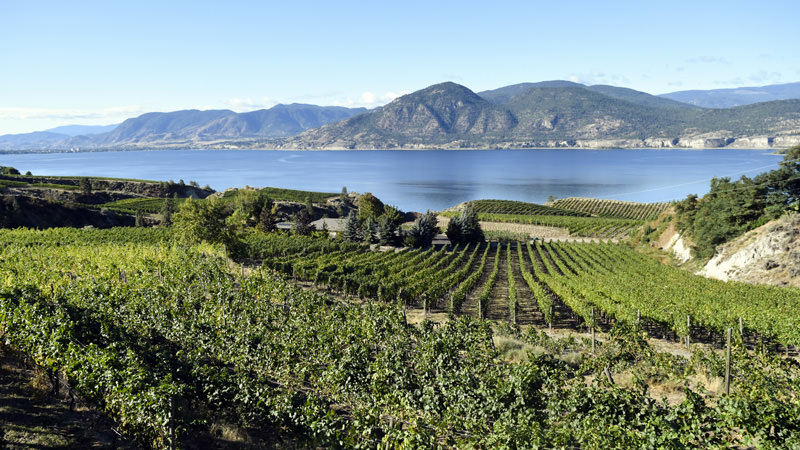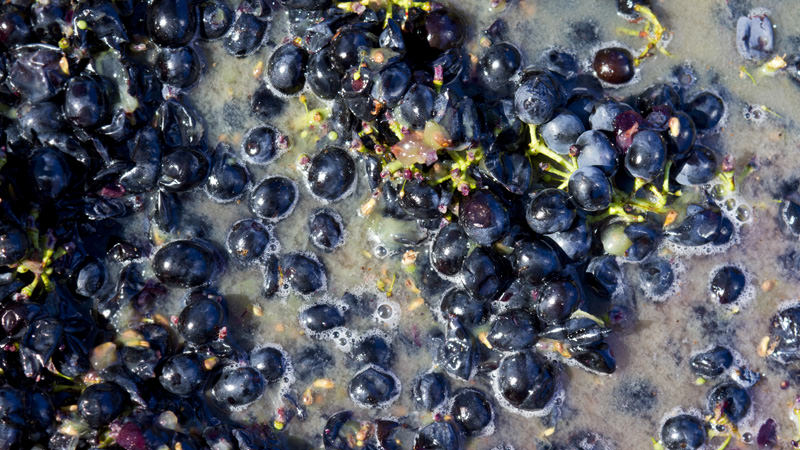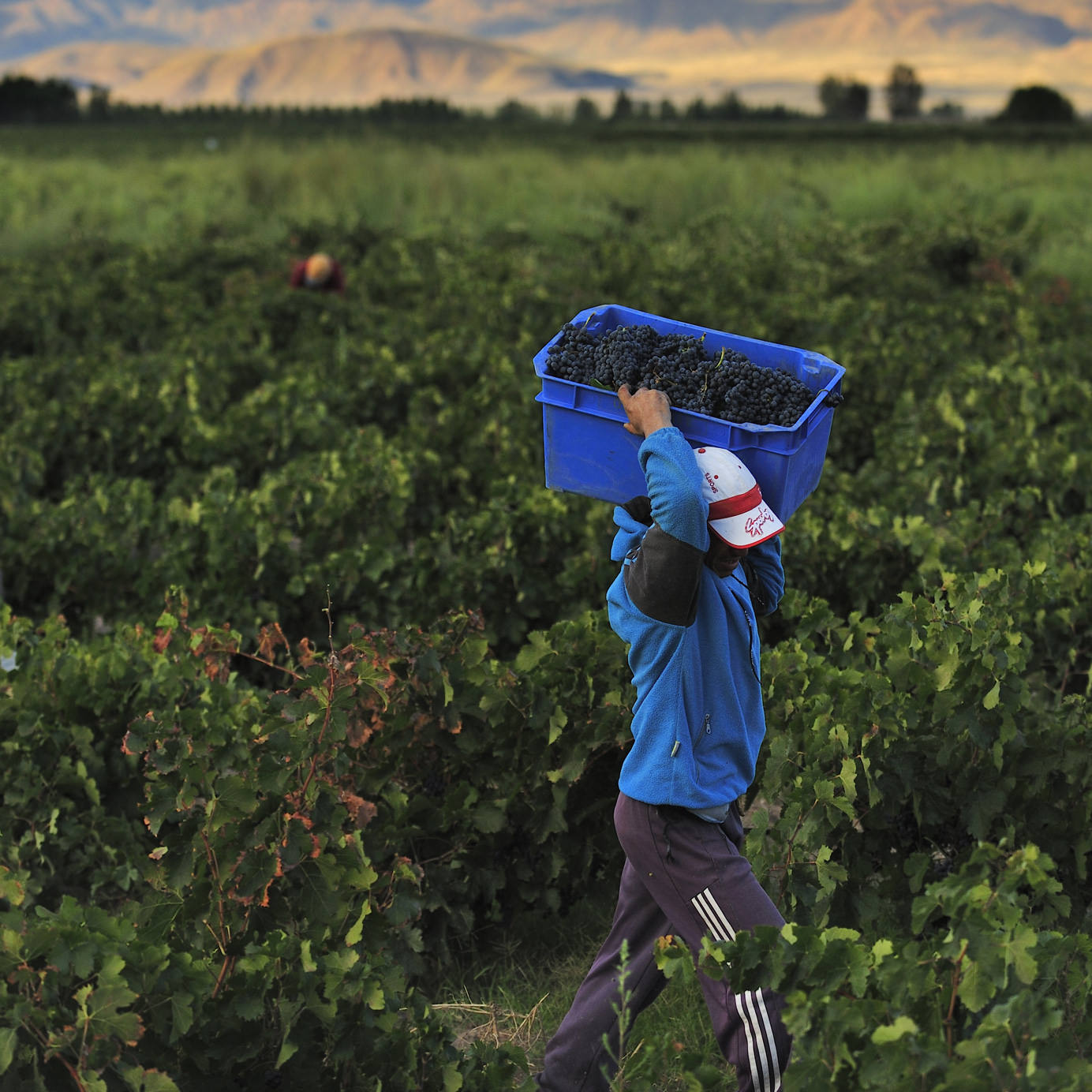With his long hair, Matt Goddard looks a bit like a bass player from a progressive rock band. But he’s a scientist, and his field of interest is microbial ecology.
Goddard’s particular interest of late is wine yeasts. He uses modern genetic techniques to answer one of the long-standing controversies in the wine world: Can we think of yeasts as part of terroir? As wine is a microbial product, this is an important question.
Terroir is one of the most interesting —and divisive — concepts in wine. The French term is used to describe both the physical characteristics of a vineyard, and the local flavors it gives the wines that come from it. So you can describe a patch of land as a terroir, but the term also refers to characteristics of the wine derived from the vineyard, all of which make each wine uniquely local.
It is taken seriously enough in the Old World that wines are most commonly labeled with place names, and not the grape varieties inside. Sometimes, the parcellation can be extreme: Within the same Burgundy village there might be 20 or so vineyards, producing wines different enough that the vineyard name appears on the label.
Our understanding of microbes and their role in winemaking is currently exploding, largely because of new genetic fingerprinting technologies. Next-generation sequencers have opened up new — and affordable — ways of investigating microbial ecology.
In the past, research in this field was a bit like the person looking for lost car keys under the streetlight. (Is this where you lost them? No. It’s where the light is, though.) The old methods involved taking swabs, then culturing the yeasts and bacteria present on petri dishes. Using these techniques, you get just a snapshot of what is there — the bugs that are culturable.
Now it’s possible to take a sequencer out into the winery, or the vineyard, and see what’s actually there. This new research leads us to question some textbook information about winemaking.

Until the 1970s, almost all fermentations were what is known as “wild” ferments. The grapes were brought into the winery and fermentation was allowed to take off naturally, started by yeasts present on the grapes, or even lurking in the winery. Then, freeze-dried active yeasts were introduced — yeasts selected from successful fermentations and then cultured by yeast companies to later be sold in packets — and became popular. These were cultured strains of Saccharomyces cerevisiae, the alcohol-fermenting yeast. It is able to survive the challenging conditions of a fermentation, with low nutrients, high acid, increasing levels of alcohol, and low levels of oxygen.
In an uninoculated ferment, the early stages of fermentation are carried out by what are known as “wild” yeasts. These are the likes of Kluveromyces, Metschnikowia, Torulaspora, Istarmerella, Rhodotolura, and Pichia. If you examine grapes or look in the vineyard, it’s very hard to find Saccharomyces cerevisiae, but these other yeasts, known colloquially as non-Saccs, are abundant. They carry out the first stages of fermentation, and then Saccharomyces gets its act together and finishes things off.
Because of its rarity in vineyards, some people were arguing that Saccharomyces was actually a domesticated yeast, and evolved in conjunction with human brewing and baking activity. This is why it’s hard to find in the vineyard, the argument goes, and in fact what happens during wild ferments is that yeasts resident in the winery end up carrying out the fermentation. If cultured yeasts were used in the winery, it’s therefore impossible to have a “natural” fermentation.
Goddard’s work on yeast ecology has shaken this theory. For starters, he says, the idea that Saccharomyces cerevisiae is a domesticated species created by humans is blatantly wrong. It evolved around 80 million years ago, about the time that plants began to produce fruit, and the reason it is especially good for making wine is because of the ecological niche it exists in, and the way that it shapes this niche to suit itself. This yeast loves high-sugar fruits but, as it happens, lots of bugs and insects would also like to make the most of high-sugar fruits. So Saccharomyces engineers its own habitat: It deliberately uses an inefficient process, fermentation, to kill off other microbial competitors. In the process, it kicks out ethanol, carbon dioxide, and heat to toxify the environment of the fruit and create a selective advantage for itself. So it exists in nature, even if it is hard to find when it’s not doing its seasonal job of living on ripe, damaged fruit.
Goddard’s research group carried out a series of studies in West Auckland, New Zealand. New Zealand is geographically remote, and was only inhabited by humans as recently as 700 years ago. The human introduction of wine occurred just 100 years ago. In the first study, Goddard looked at a spontaneous Chardonnay fermentation at boutique winery Kumeu River. He took 800 random samples from the ferment. Initially, S. cerevisiae was present at very low frequency (approximately 1/1500 of the population), but by day 11 it dominated the fermentation.
Using genetic fingerprinting, Goddard found 88 different genotypes from 380 isolates of S. cerevisiae. He analyzed the genetic data against statistics, and concluded there were around 150 different genotypes present in the fermentation, derived from six distinct subpopulations.
But were these “wild” populations of S. cerevisiae actually escaped commercial strains? Goddard and his team compared them with a large database of commercial yeast strains and found they were quite different. They then combed the winery, sampling winery equipment and walls before harvest, and failed to find any S. cerevisiae. The conclusion was that the strains in the wild ferments they analyzed were brought into the winery with the grapes.
In the next phase of the experiment, Goddard and his co-workers sampled soil, bark, and flowers from Matua Valley vineyard, which is less than four miles from Kumeu River and surrounded by bush. They found 122 different colonies of S. cerevisiae, with 22 different genotypes. Two were in vine bark, two in buttercup flowers, and the remainder in the soil. None of the Matua Valley genotypes matched any commercial isolates; nor did they match the isolates in the Kumeu River ferment, but they were very closely related.
The inference is that these local strains, from soil bark and flowers, carry out the indigenous fermentations. It makes sense that S. cerevisiae must be living somewhere in the environment, because ripe fruit is only available as a habitat for a couple of months a year at most. But how are these strains spreading among the soil, bark, and flower niches, and then getting onto the fruit? The obvious explanation seems to be by insect transfer, so Goddard took 19 samples, over a five month period, from an apiary that has hives near both West Auckland vineyards that he has studied. From the 67 colonies of bee-borne S. cerevisiae analyzed, two were almost identical to isolates from the Matua Valley vineyard.
One question remained: How similar were these New Zealand isolates to yeasts in other countries? The answer was, pretty unique. On average, the New Zealand isolates shared less than 0.4 percent of their ancestry with international strains of S. cerevisiae.

This work challenges accepted notions about yeasts and fermentation. In particular, it supports the idea that the local yeasts, unique to each vineyard area, were part of the terroir, contributing to the local flavor of wine. As you can imagine, these results were seized on by those who champion natural fermentations and think that adding commercial yeast is a form of wine adulteration.
Other studies, however, suggest that the picture is more complex. Consider the series of studies conducted by Jessica Lange, a master of science student, in Canada’s Okanagan Valley.
In the first, Lange looked at three different wineries and compared spontaneous and inoculated fermentations in each of these regions, looking at four different stages of fermentation. She found a wider diversity of species taking part in all the fermentations in the younger winery, which was 12 years old at the time. In the two older wines, where there was a longer history of inoculating, most of the fermentations were carried out by commercial strains that had become resident in the winery. Even where the fermentations were inoculated with a commercial yeast, there were some instances where the resident strains displaced the inoculated strain and carried out the fermentation.
But all of the ferments — inoculated and wild — were treated with a 40 milligram/liter dose of sulfur dioxide before they got going. This is usually done to sway things in favor of Saccharomyces cerevisiae, rather than wild yeasts and bacteria that have lower tolerances to sulfur dioxide. It’s not a massive dose, but it might make life a bit difficult for the wild yeasts.
In another study, researchers looked at Pinot Noir fermentations at two vineyards at Stone Boat winery in the Okanagan, from three different vineyard blocks. They identified 254 different strains of yeast, including 100 commercial strains. This was quite a high proportion, but there were enough non-commercial strains for the authors to conclude that the Okanagan probably has its own strains of indigenous yeast.
Elsewhere, the picture seems very mixed. Researchers have found that the surfaces in wineries harbor lots of resident yeasts, even when the winery has been cleaned quite carefully. And when fermentations are taking place, the air in the winery is full of yeasts. As a result, many studies report spontaneous fermentations being taken over by winery resident commercial strains.
Others are more in agreement with Goddard’s results from New Zealand. One Austrian study looked across four regions and found that a wide diversity of strains of Saccharomyces cerevisiae carried out wild ferments, and they were all unique to Austrian vineyards.
Then again, a three-year study from two regions in Italy seems to indicate that the effect of vintage on yeast populations overcomes terroir. Across 14 sites in Franciacorta and Oltrepò Pavese, of the 270 isolates of Saccharomyces, they identified 47 as commercial strains. They found a high diversity of yeasts, but the vintage conditions seemed to affect the diversity more than the geography, arguing against yeast populations being a fixed aspect of terroir.
This is partly supported by a study looking at bacteria and fungi present on grapes in California. There, the authors found an effect of climate. But they also found a varietal pattern (different grape varieties have different populations), and a link between geography and the different microbial populations.
There’s yet more complexity. It seems that the farming system can also affect the vineyard yeast populations, with organic vineyards having a wider diversity than those that are conventionally managed. This is presumably because of the effects of systemic fungicides.
It’s hard to know what to conclude. A consistent finding seems to be that the early stages of wild ferments are carried out by non-Saccharomyces yeast species and that these seem to be local strains, even though the same species crop up frequently. What differs is what happens next. The majority of the ferment will be carried out by Saccharomyces cerevisiae. The question is, will it be wild strains of this yeast that are locally derived, or a single strain that’s resident in the winery and is hijacking the fermentation?
The best answer we can give to this question is: It depends. It could be country- or region-dependent, and it could depend on the farming system, and whether cultured yeasts are being used in the winery. Even when people spend money on commercial yeasts, they don’t know for sure that these are carrying out the fermentation, it seems. These are important questions, because it’s the yeasts that create many of the flavor compounds that make wine so interesting.
Expect more research, and a whole lot more heated discussion on this topic in the next few years! Our understanding of this microbial science, like that of wine, is still evolving.
